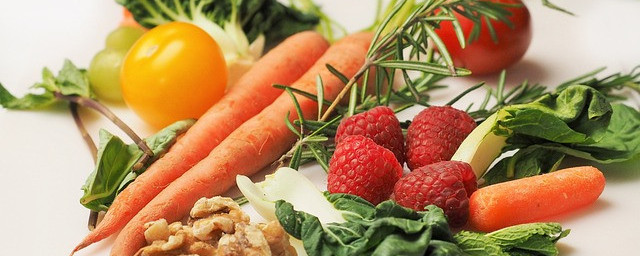I earn commissions if you shop through the links below at no additional cost to you.
Last Updated on March 24, 2023 by Jeremy
Natures most wonderful foods come in many forms. The nutritious facts on fruits and vegetables can be overwhelming when compared to that of genetically modified versions.
It’s best to take any fruit and vegetable, and get it as organic as possible, by growing them in greenhouses, planters or gardens, such as a garden tower.
There are many differences between the two in terms of structure, taste and nutrition; although, both are essentially good for us!
Fruit Facts
Fruits develop from the flower of plants and the other parts of the plant are vegetables, botanically speaking. The fruits will contain seeds while vegetables can consist of stem, leaves and roots.
In the world of culinary arts, fruits and veggies are distinguished by taste. Fruits are generally sweeter or more tart than their savory, mild counterparts. This makes vegetables the star for entrees or side dishes.
Some fruits have been mislabeled as vegetables; even though, they fit the botanical criteria. Due to their flavor profile, some fruits will forever stay labeled as vegetables.
Some examples of fruits that are mistaken as vegetables are below:
- avacado
- winter squash
- cucumbers
- eggplant
- peppers
- olives
- pumpkins
- pea pods
- zucchini
- tomatoes
Tomatoes ruled to be a vegetable by the U.S. Supreme Court in 1893!
Vegetable Facts
Some vegetables have a sweeter flavor profile, like the sweet potato, which can be made into sweet potato pie. Although sweet, it is classified as a root vegetable.
Beets, turnips, carrots and rutabagas also carry a sweeter taste as well as yams.
Nutritionally, vegetables are excellent for us. They boast loads of vitamins and minerals as well as fiber. Not only that, but vegetables are naturally low in sodium and fat. These statements can also be made about fruits, but fruits tend to have a higher amount of natural sugar and calories.
Water content is highly variable between fruits and veggies. Leafy greens are roughly 84-95% water, whilst fruits contain a lesser percentage with the range between 61-89%.
Categories and Facts
There are different categories of fruits & vegetables, which will be shown below:
-
- Tubers – rich in fiber, good source of vitamin c, beta-carotene, potassium and B vitamins.
- examples: potatoes, sweet potatoes, yams, cassava, taro, jicama
- Citrus Fruits – high in vitamin c, beta-carotene, folate, antioxidants that can offer protection against degenerative disease.
- examples: oranges, grapefruit, lemons, limes, mandarin, clementine, tangerines, kumquat, tangelo, pomelo
- Cruciferous Vegetables – contain glucosinolates, or compound group linked to the prevention of cancer
- examples: arugula, bok choy, broccoli, brussel sprouts, cabbage, cauliflower, Chinese broccoli and cabbage, collard greens, daikon, kohlrabi, etc.
- Berries – full of anthocyanins, anti-inflammatory compounds linked in the reduction of oxidative stress and promotes heart health
- examples: cranberries, blueberry, huckleberry, choke berries, elderberry, gooseberry, boysenberry, red & black currants, strawberries, blackberry, raspberries, mulberry, acai berries, etc.
- Leafy Greens – contains a good source of litein, a carotenoid, which has been shown to reduce the risk of heart disease, stroke and cancer
- examples: kale, micro greens, collard greens, spinach, cabbage, beet greens, watercress, romaine lettuce, Swiss chard, arugula, endive
- Tubers – rich in fiber, good source of vitamin c, beta-carotene, potassium and B vitamins.
Final Facts
Incorporating both fruits and vegetables increase your chances of a more diverse range of nutrients. Specific types offer different nutrients, so don’t be shy to try out those good, whole foods.
The best part, if you add some fruit, cheese and nuts or seeds, you have a filling meal. Cooking was never about playing it safe, so why not get creative?
If you need inspiration, 100 Salad Ingredients (listchallenges.com) has got you covered with their comprehensive list of salad ingredients.
Conclusion
As we can see, we have a whole variety of fresh, wholesome, naturally, organic and juicy fruits and vegetables that we can basically live off of. Each having their own list of facts of prevention and health benefits, we don’t need to worry about anything else. We can never run out of these delicious foods either through the utilization of gardens!
Also, we recognize how each of the above being utilized in the culinary sector, provide some valuable alternatives to a main course meal, in terms of side dishes. Let’s not forget that both can also be naturally fermented, which you can read about here ==> What is Natural Fermentation – Everything Nature and More
Until next time,
Earth is Heart!








Fruits and vegetables are very nutritious foods and are the best sources of vitamins and minerals. No wonder then that doctors recommend we eat more of them over meat and other kinds of foods.
But it is also important that we know which categories these fruits and vegetables belong to so that we would know exactly what to eat more for our specific health needs. Among these categories, I tend to eat more leafy greens and citrus fruits because they are readily available in our local market.
You’re right; there are fruits that are mistaken to be vegetables and vice versa. ☺
So Very True Alice!
Fruits and Vegetables are extremely nutritious and delicious as well. They always seem so Fresh when you eat them.
Glad you enjoyed the article.